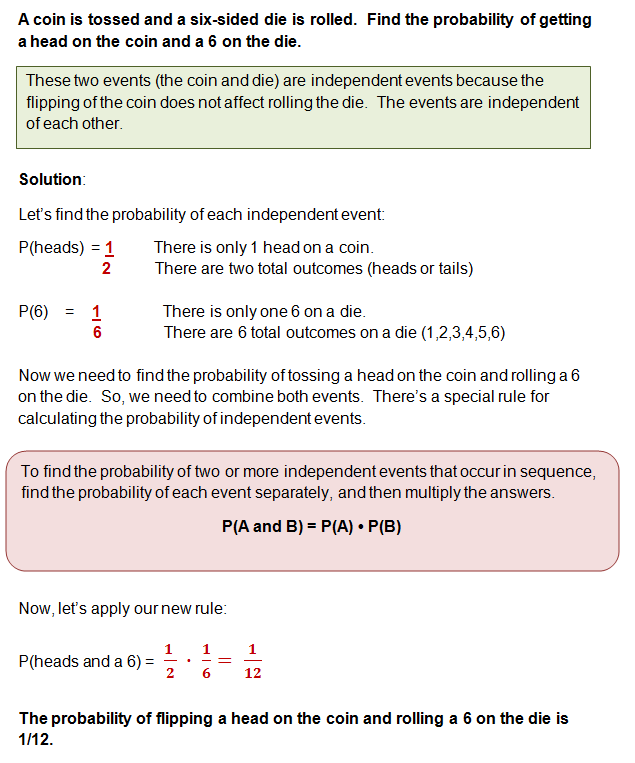Theoretical Probability versus Experimental Probability
You've heard the terms, theoretical probability and experimental probability, but what do they mean?
Are they in anyway related? This is what we are going to discover in this lesson.
If you've completed the lessons on independent and dependent probability, then you've already found the theoretical probability for numerous problems.
Theoretical Probability
Theoretical probability is the probability that is calculated using math formulas. This is the probability based on math theory.
Experimental Probability
Experimental probability is calculated when the actual situation or problem is performed as an experiment. In this case, you would perform the experiment, and use the actual results to determine the probability.
In order to accurately perform an experiment, you must:
- Identify what constitutes a "trial".
- Perform a minimum of 25 trials
- Set up an organizer (table or chart) to record your data.
Let's take a look at an example where we first calculate the theoretical probability, and then perform the experiment to determine the experimental probability.
It will be interesting to compare the theoretical probability and the experimental probability. Do you think the two calculations will be close?
Example 1 - Theoretical Versus Experimental
This problem is from Example 1 in the independent events lesson. We calculated the theoretical probability to be 1/12 or 8.3%. Take a look:
Theoretical Probability

Since we know that the theoretical probability is 8.3% chance of flipping a head and rolling a 6, let's see what happens when we actually perform the experiment.
Experimental Probability
Identify a trial: A trial consists of flipping a coin once and rolling a die once.
Conduct 25 trials and record your data in the table below.

For each trial, I flipped the coin once and rolled the die. I recorded and H for heads and a T for tails in the row labeled "Coin."
I recorded the number on the die in the row labeled "Die".
In the last row I determined whether the trial completed the event of flipping a head and rolling a six.
In this experiment, there was only 1 trial (out of 25) where a head was flipped on the coin and a 6 was rolled on the die.
This means that the experimental probability is 1/25 or 4%.
Tip
Please note that everyone's experiment will be different; thus allowing the experimental probability to differ.
Also, the more trials that you conduct in your experiment, the closer your calculations will be for the experimental and theoretical probabilities.
Conclusions
The theoretical probability is 8.3% and the experimental probability is 4%. Although the experimental probability is slightly lower, this is not a significant difference.
In most experiments, the theoretical probability and experimental probability will not be equal; however, they should be relatively close.
If the calculations are not close, then there's a possibility that the experiment was conducted improperly or more trials need to be completed.
I hope this helps to give you a sense of how to set up an experiment in order to compare theoretical versus experimental probabilities.

Need More Help With Your Algebra Studies?
Get access to hundreds of video examples and practice problems with your subscription!
Click here for more information on our affordable subscription options.
Not ready to subscribe? Register for our FREE Pre-Algebra Refresher course.





Comments
We would love to hear what you have to say about this page!